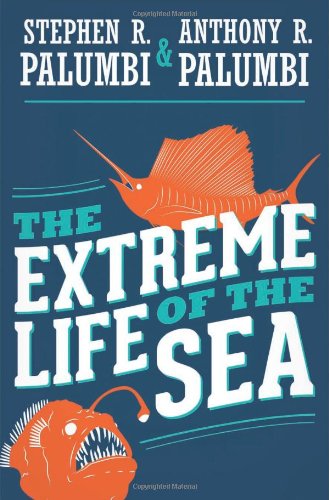Published in the Ocean Watch column, Honolulu Star-Advertiser © Susan Scott
June 16, 2014
Bone-eating snot flower.” That’s the enchanting name that inspired me to dive deep into a new book, “The Extreme Life of the Sea,” by father-and-son team Stephen and Anthony Palumbi (Princeton University Press). The book arrived while I was sailing the South Pacific. Home now, and up to my eyeballs in mail, I was halfheartedly turning pages when those weird words jumped out at me from a caption beneath a picture of a long-dead whale. See Chapter 4? With pleasure.
And so off I set on another of my favorite kinds of voyaging: discovering marine animals new to me and learning new facts about animals I already know.
The authors take a special approach to sharing their admiration of the animals that grace our planet’s oceans. Stephen, a marine biologist at Stanford University, and son Anthony, a novelist and science writer, combined their skills to write a scientifically accurate book using the storytelling narrative of a novel.
The result is a rare hybrid: a funny and easy-to-read book full of accurate science. If, like me, you want to know “says who?” to the facts, the authors include “a tantalizing citation trail for the reader to follow if she chooses.”
The Palumbis focus on the cool stuff: how the animals that live in ocean extremes, from freezing to boiling, shallow to deep, bright to black, do so.
“Life is a carousel of struggle and success,” they write, “of beauty and beautiful ugliness.”
Take, for instance, that bone-eating snot flower. In 2002 researchers discovered a gray whale’s bones lying two miles deep on the ocean floor. Boring into the bones of the carcass were hundreds of thousands of blind zombie worms called Osedax mucofloris. “Osedax” means “bone-eating,” and “mucofloris” translates, roughly, as “snot flower.”
Each red worm is a fingernail-size, jellylike mass with green tendrils below that spread out like tree roots. Bacteria in the tendrils make acid that breaks down bone, enabling the worm to extract nutrients. The flower part of the creature is a filament-tipped fleshy stalk that extends into the water, absorbing oxygen like a gill.
Only females of the species eat bones. Dozens of minuscule males, being little more than sperm sacks, cling to the sides of each female waiting for their big moment: to fertilize the eggs of their landlady.
I’ve not met Stephen and Anthony Palumbi, but I would like to because I feel we are kindred spirits. The father and son wrote their book for the same reason that 27 years ago I started writing this weekly column: to share the awe and respect we feel when watching, swimming with and studying marine animals.
I’m reading “Extreme” slowly to savor the details, but I don’t have to memorize them. This book is going on the top shelf in my reference library.
Stephen and Anthony write in their prologue that their aim is to give the reader “a delighted sense of wonder at every mystery, and a spark of joy at each discovery.”
For this reader they succeed throughout. But then, they had me at “bone-eating snot flower.”